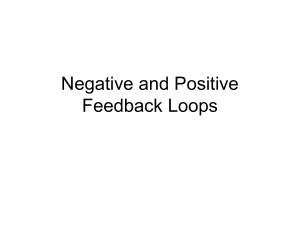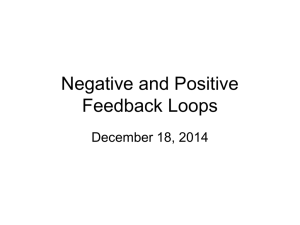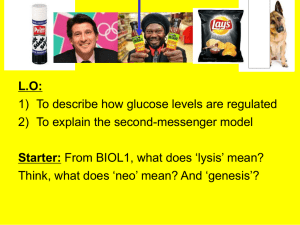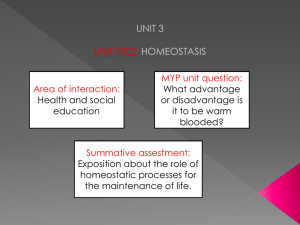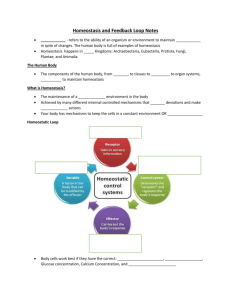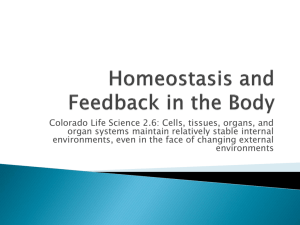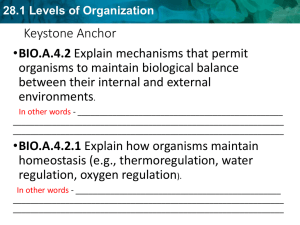D.R. 1.2 Feedback Loops 9th ed
advertisement
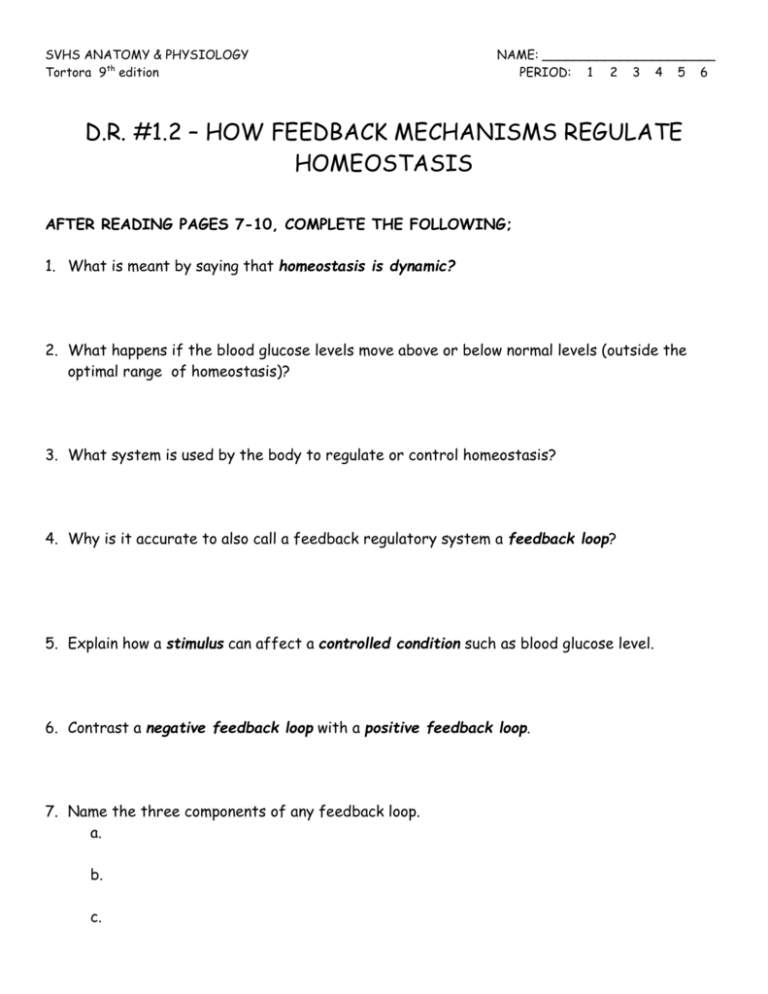
SVHS ANATOMY & PHYSIOLOGY Tortora 9th edition NAME: ______________________ PERIOD: 1 2 3 4 5 6 D.R. #1.2 – HOW FEEDBACK MECHANISMS REGULATE HOMEOSTASIS AFTER READING PAGES 7-10, COMPLETE THE FOLLOWING; 1. What is meant by saying that homeostasis is dynamic? 2. What happens if the blood glucose levels move above or below normal levels (outside the optimal range of homeostasis)? 3. What system is used by the body to regulate or control homeostasis? 4. Why is it accurate to also call a feedback regulatory system a feedback loop? 5. Explain how a stimulus can affect a controlled condition such as blood glucose level. 6. Contrast a negative feedback loop with a positive feedback loop. 7. Name the three components of any feedback loop. a. b. c. To the right is a flow chart regarding the regulation of blood glucose levels. Answer the following questions regarding the regulation of glucose levels in the body: 8. In what way has the blood glucose level changed in this example? 9. What might have been the stimulus that caused this change? 10. What are chemoreceptors and what role do they play? In what organ are the chemoreceptors found that detect blood glucose levels? 11. What hormone is secreted by the pancreas when blood glucose levels are too high? 12. What two actions are caused by the secretion of this hormone? a. b. 13. What affect do the two actions have upon blood glucose levels? 14. What is the name of the hormone secreted by the pancreas of blood sugar levels are too low? Explain the affect of this hormone being secreted. 15. Is this example a negative or positive feedback loop? Explain your answer.
